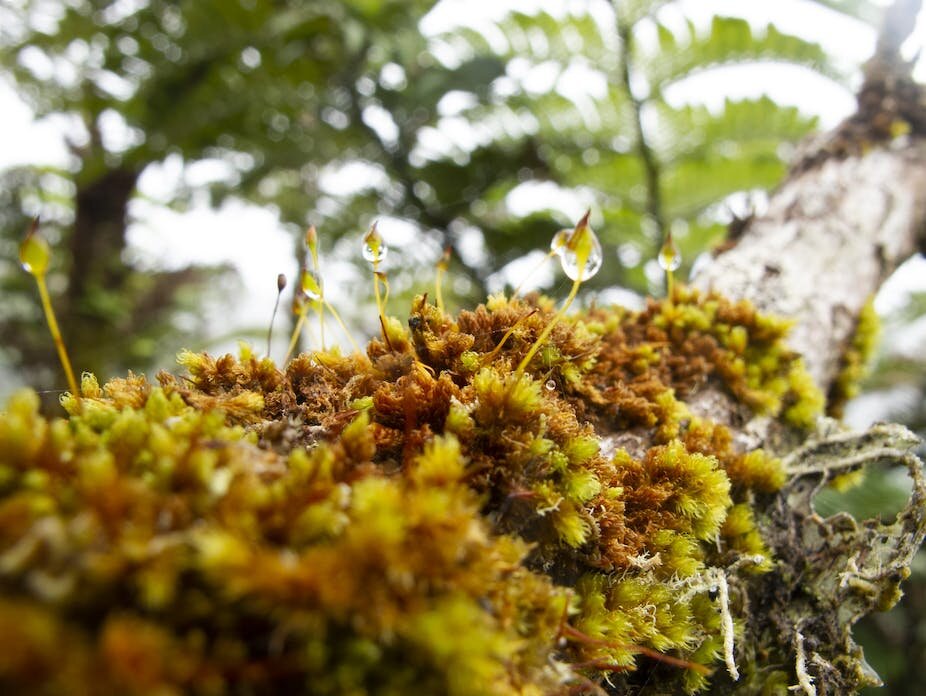When people consider extraordinary plants, most probably don’t spare a thought for moss. It blends in against the green background of plant life, and seems to grow everywhere—whether you want it to or not.
But this group of plants, which actually comprises between 12,000 and 15,000 species, is astonishing. Their almost unique resilience allows them to grow practically everywhere on Earth. They are helping scientists understand the evolution of life, and are one of the most ancient plant groups alive today.
A recent study by an Australian research team found that mosses are the lifeblood of habitats around the world, with plants and soil in better shape almost everywhere they grow.
Despite their importance, mosses are often overlooked due to their diminutive size. The smallest mosses, known as micromosses, measure only a few millimeters in length. Even the largest moss, Dawsonia superba, a species native to Australia, New Zealand and the Pacific Islands, only reaches heights of up to 50cm—a giant among mosses, yet still smaller than the average houseplant.
But in fact, mosses help hold up entire ecosystems.
Drivers of critical ecosystem services
The contributions of mosses to the structure and function of modern ecosystems is often overlooked, lagging behind our understanding of more complex plants. The Australian study examined mosses’ relationship to their habitats in detail, and found they are critical to soil health.
The researchers collected moss samples from ecosystems around the globe—from tropical rainforest to polar landscapes through to arid deserts. Combining their findings from these samples with an analysis of previous research, their results showed that mosses are key players in every habitat in which they are found. Mosses store huge amounts of carbon, help the soil nutrient cycle, and also the decomposition of organic matter.
Mosses can even come to the rescue in disturbed ecosystems. Research examining the area around the Mount St. Helens volcano following a devastating eruption in the early 1980s found mosses were among the first forms of life to reappear.
Some types of moss, including the Sphagnum species, absorb and hold water in their tissues. This regulates water flow in the area, preventing flooding and creating peatland habitats which are home to rare plants and animals.
Mosses also provide unique habitats for microscopic life. Tardigrades, eight-legged micro-animals, are also known as moss piglets or bears of moss, thanks to their habit of clambering through moss “jungles” in search of their next meal. Moss piglets are nearly indestructible and can even survive in outer space, by entering a death-like state called cryptobiosis.
Ancient ancestors
Mosses, along with liverworts and hornworts, are part of a group of plants known as bryophytes. These evolved more than 400 million years ago and still share many characteristics with the first plants to have emerged on to the Earth’s land surfaces—their small size and lack of true roots, for example. And while most plants have a continuous column of water which flows inside them via a xylem and phloem, mosses don’t—just like some of the most ancient plants in Earth’s history.
Instead, these tiny plants have their own conducting systems to move substances around their bodies. They absorb water and nutrients from rainwater and dust deposits across their surfaces. Their hair-like “roots”, known as rhizoids, anchor mosses to the surface they are growing on.
Mosses are almost unparalleled in their ability to survive harsh environments. This makes them excellent for studying the evolution of plants, much of which occurred during challenging conditions on Earth.
The study of modern mosses’ and other bryophytes’ genetics and physiology has given researchers insights into the adaptations that allowed plants to transition from water to land—for example, the formation of partnerships with fungi to access soil nutrients. Their incredible resistance to environmental stress such as drought and UV radiation was also crucial to their ability to evolve on land.
One of the most critical features of land mosses is their desiccation tolerance, which is the ability to survive near-complete drying out. When water is scarce, mosses can enter a state of suspended animation where they greatly reduce their metabolic activity, allowing them to survive until conditions improve. Some species, such the desert moss Syntrichia caninervis, can survive a hundred years in this dormant state and revive within hours of rewetting.
Studying the mechanisms of this ability in modern plants helps scientists understand how ancient plants might have adapted to land. It is possible that studying desiccation tolerance in mosses could help scientists discover new ways to protect crops from extreme drought in the future.
These little plants are also entwined with human history. From exploiting the antiseptic properties of moss for wound healing to using broom moss (Dicranium scoparium) for relief of constipation, mosses have played a substantial role in relieving human suffering.
So, perhaps we should think twice before raking out mosses from the lawn. Instead, take a moment to consider the natural beauty of their delicate green tendrils—and their history as some of the most intrepid explorers in Earth’s history.
This article is republished from The Conversation under a Creative Commons license. Read the original article.
Citation:
The secret world of moss, ancient ancestor of all plants and vital for the health of the planet (2023, May 26)
retrieved 27 May 2023
from https://phys.org/news/2023-05-secret-world-moss-ancient-ancestor.html
This document is subject to copyright. Apart from any fair dealing for the purpose of private study or research, no
part may be reproduced without the written permission. The content is provided for information purposes only.
For all the latest Science News Click Here
For the latest news and updates, follow us on Google News.

